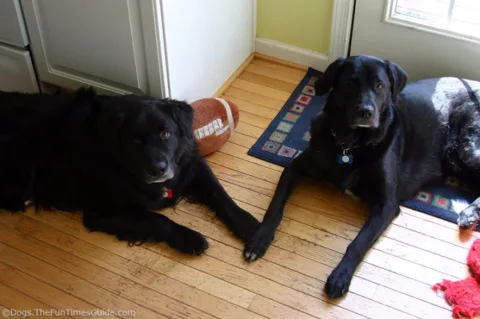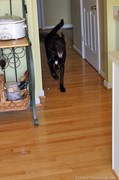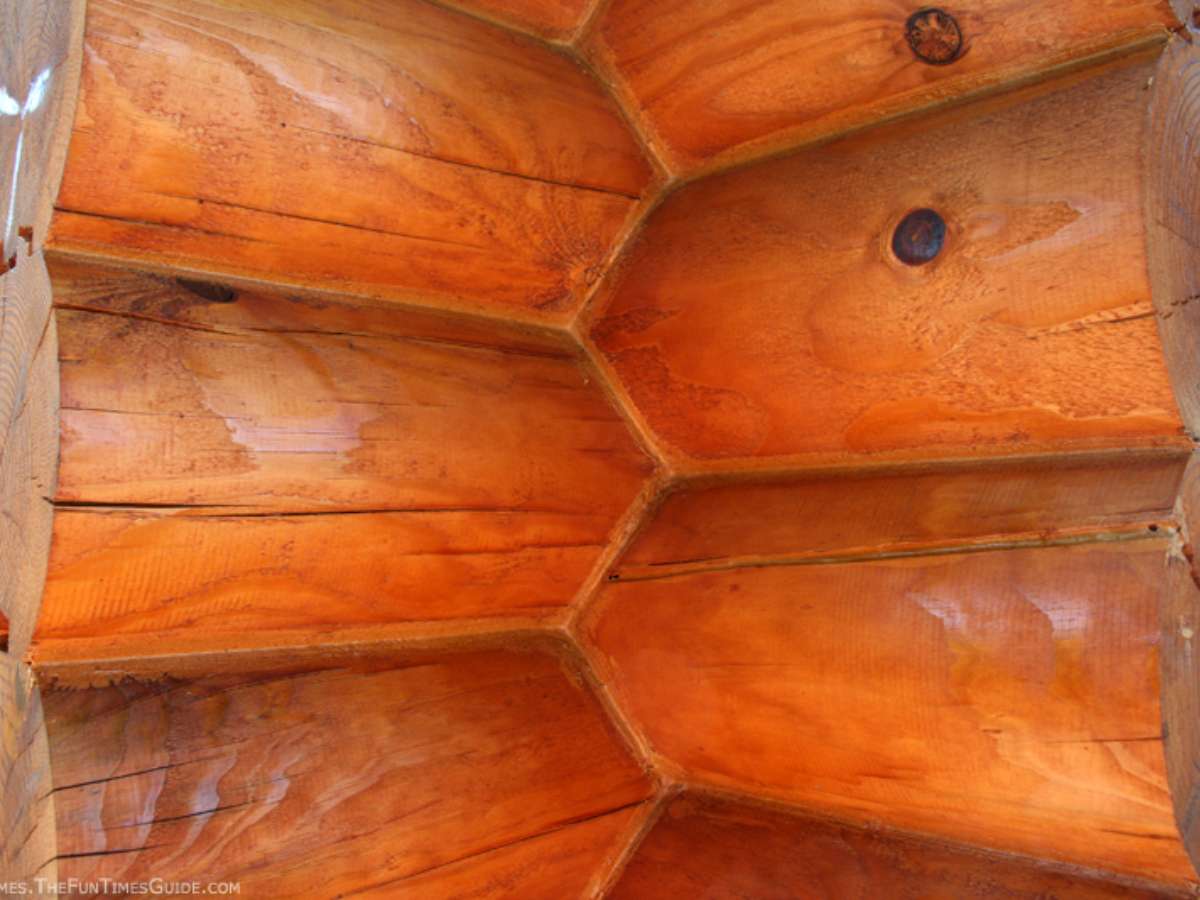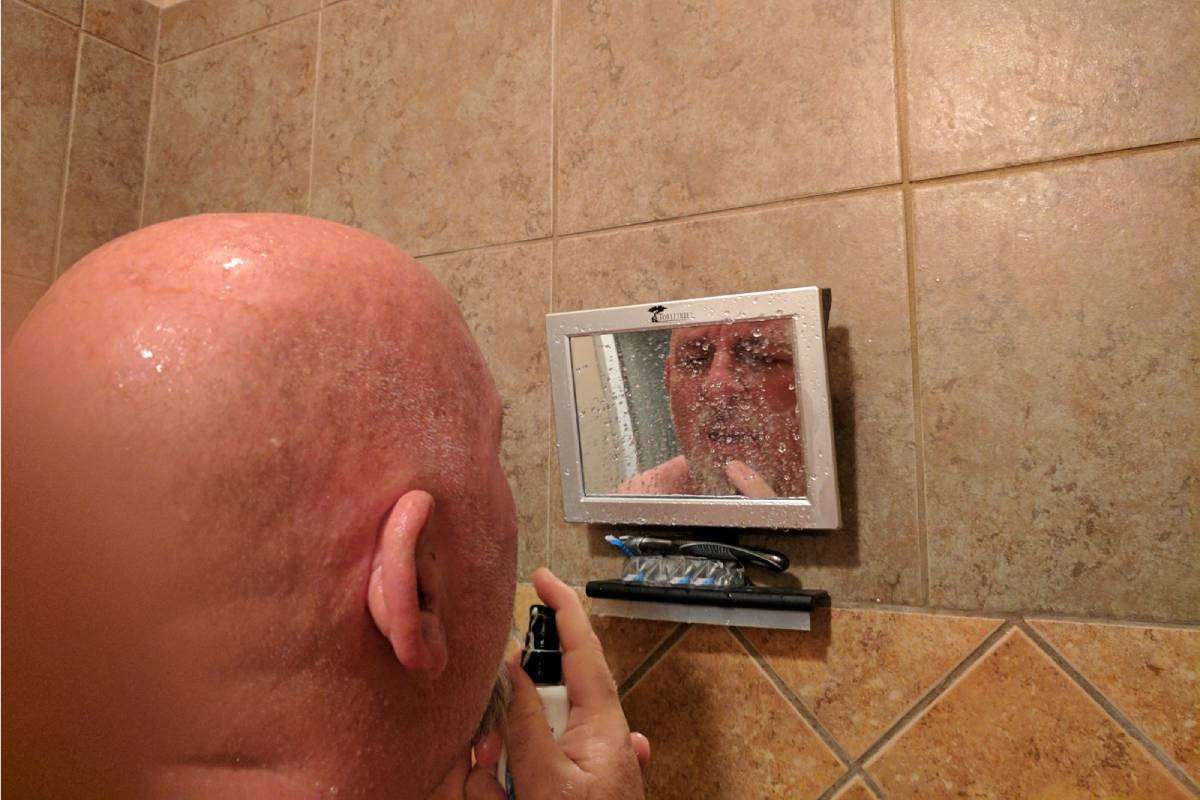In the process of trying to find “the perfect” hardwood floor for our new log home, I found the following tips and opinions from fellow dog owners and veterinarians helpful.
If you have dogs, and you’re wondering which type of flooring will show the fewest stains and scratches from their toenails (ahem, claws!)… then you, too, will appreciate the feedback below.
These are tips from dog owners themselves — or experts in the field who know how a dog’s nails can wreak havoc on your precious hardwood flooring.
Perhaps you will find the answers to some of your own questions about dogs and hardwood floors.
I know I did!
Some dogs grow a lot of fur between the pads of their paws; they slip easily on wood floors when this grows out, and tend to try to dig in with their claws to compensate. Are you trimming the fur between the pads as short as you can? — Paulsc
If I had it to do over again I would get the roughest slate I could find. — Toni
Here’s my opinion about hardwood floor and dogs: I believe that hardwood floors are beautiful and timeless even with scratches and wear. Wood is a natural product and adds a lot of character. There are some wood products we’ve seen that already have a distressed surface and wouldn’t show scratches as much as others with a smooth, shiny surface. In my opinion wood floors are like old VW Beetles — you can paint an old Beetle any color, put eyelashes on the headlights, etc, and it is still a collector’s item. No other car can get away with looking like that. Same with an older hardwood floor with wear. If a home buyer enters a home and sees an old scratched vinyl floor, they will immediately think of replacing it. If they see a hardwood floor that has noticeable wear, they will likely think “hardwood floors!” and consider having them refinished. I say get the floor you like, keep your dogs’ nails trimmed, wipe up drips and such as you see them, put a rug down where they tend to slobber most, and enjoy your hardwood floors if that’s definitely what you want. — Jenn
If it is a heavy(ish) dog (lab-sized or bigger by my guess) that is consistently allowed to have longish nails, you will want to worry more about the finish you put on the flooring. You will want a lot of coats of something pretty resistant.If you have a light dog or you have a dog whose claws are always cut/worn down to not touch the flooring, you don’t need to worry as much about scratches. — Marcel Beaudoin
Dogs also become habituated to slipping and clawing on wood floors. Don’t do play or command behaviors that encourage the dog to slip on the wooden floors, even though you may think it is cute to watch him slide around. — Paulsc
I think wood is about the best flooring surface for both humans and dogs. I have not found it to be particularly scratch-prone. What scratches *do* happen can be easily buffed out with a little stain-varnish combo. As for the dog’s nails, if they are clicking on the floor, they are too long and ought to be trimmed. Keeping the dog’s nails short will go a long way toward keeping your floor scratch-free. — Shelley
With wood, tile, or vinyl flooring, the runners can help protect the surface. If you go with carpet, all you have to worry about is the dog soiling it once in a while which if you have him/her housetrained well shouldn’t be much of an issue. If you go with hardwood, tile, or vinyl laminate you have to look at upkeep, slipping and sliding around, and constant waxing and/or sealing but it is much easier to clean little messes.
— Les Hilliard
It’s a fair amount of work, and depends on the finish of your flooring as to whether it is suitable to do this, but getting a couple of coats of top quality floor wax down can make a big difference. Floor wax can both protect the finish of the floor, and improve the traction a dog gets on it, reducing his need to claw. That seems counter-intuitive, as we tend to think of wax as something that makes a floor slicker, but in fact, floor wax is softer than the urethane and acrylic finishes of most modern hardwood floors, and provides a far better walking surface. Bruce Hardwood Floors makes an excellent line of floor care products. — Paulsc
I have a friend with several Dobermans who used to have a fully carpeted house and did a lot of searching before deciding to go with full ceramic tile. It has turned out to be an excellent choice, as the very occasional messes that they make are easy to clean up. — limeylew
If you want it to look like wood, you should use actual wood. Then put down about 9 coats of poly, and add mats of various materials in high-traffic areas. — Goedjn
We live in a log house high on a mile-high mountain in Northern Idaho. Because we love the look of wood, we have walnut flooring in about half of our house, with tile and vinyl flooring making up the rest. Even though walnut is a hardwood and we had a special pet-resistant finish put on it, it’s not going to take C.S.I. to know we have dogs living with us as part of the family. When the light is just right, you can see where their nails have carved what looks like hieroglyphics into the finish. We really don’t mind it, but I do have some suggestions for you if you want floors that stay looking fresh and new much longer. Everyone wants beautiful hardwoods, but if you have a pet, you’ll see scratches. Durable and easy-to-clean alternatives include:
1. Tile – Ceramic and porcelain are better than natural stone
2. Linoleum and other laminates
But if wood is a must-have in your house, experts suggest hard oak or engineered wood with a commercial grade finish to minimize (not eliminate) the appearance of scratches. My top tip? Just proudly tell people it’s not pet damage, it’s a custom distressed finish! — Veterinarian, Dr. Marty Becker






